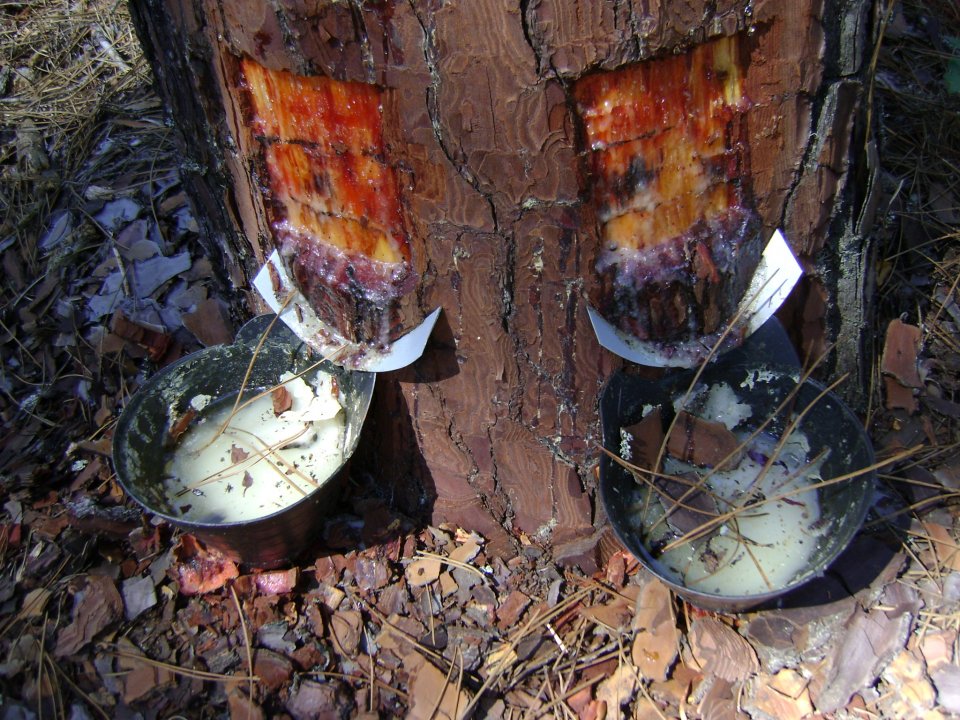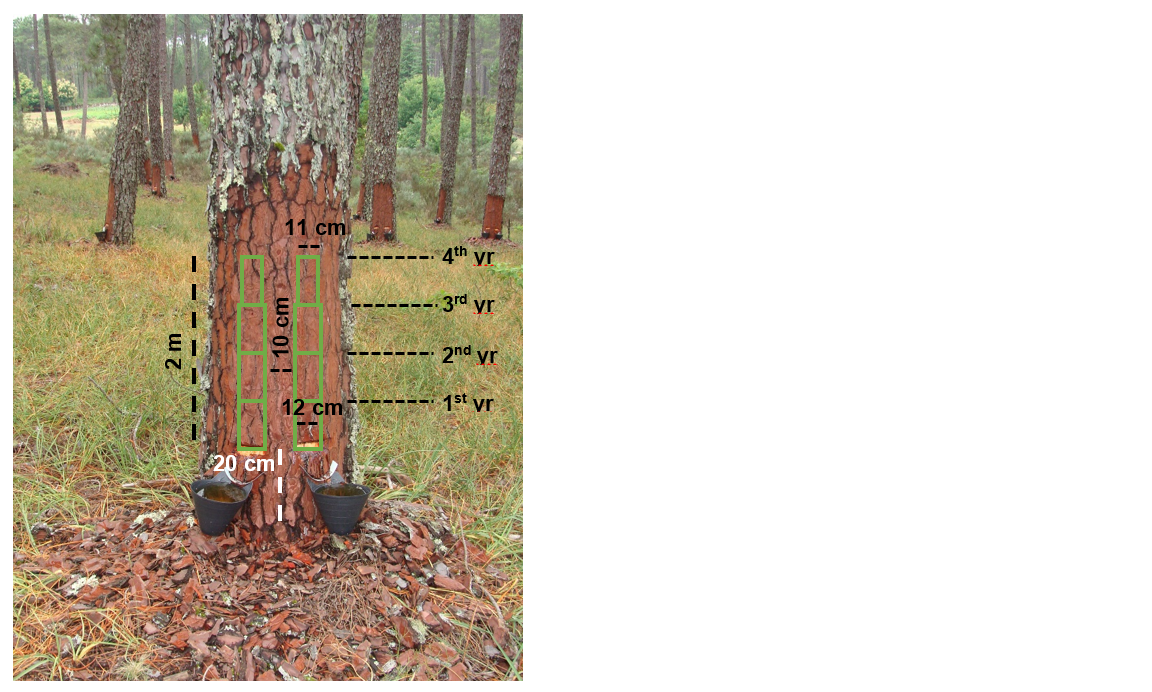
In order to ensure the sustainability of the exploitation of pine resin and to guarantee that it is guided by good management practices - promoting the vitality of pine forests and forest protection practices, contributing with relevant annual revenues - it was considered necessary, in Portugal, to define a legal regime, simplifying and concentrating all the rules in a single legal document. This legislation is an essential knowledge tool for authorities and economic agents, focusing on the production, exploitation and dynamics of resin from the forest to the industrial processing unit.
Resin tapping is one of the oldest economic exploitation activities of maritime pine and stone pine in Portugal. It has contributed to the socio-economic development of some of the most depressed regions of the country, providing employment and income opportunities and improving the profitability of forestry activities. In Portugal, resin tapping has been regulated by specific legislation since 1957. In 2015, the Government approved Decree-Law 181/2015, which establishes clear rules for resin activity and the circulation of resin in mainland Portugal.
DL 181/2015 applies to all resin operators involved in the economic circuit of pine resin in Portugal, from extraction, transport, storage, first processing to import and export. It establishes the requirements, related to wounds and other practices involving trees and resin, and several procedures, which include the registration of the operator and prior notification of resin tapping. It includes the imposition of fines for non-compliance with the rules, ensuring the sustainability of operations and resin management practices in pine forests.
The Institute for Nature Conservation and Forestry (ICNF) has implemented the SiResin app to facilitate the registration of operators and the submission of resin declarations.
(a) There is no specific resin tapping season, although higher yields are associated with the warmest months.
(b) Two resin tapping systems:
- to death: trees are tapped in the 4 years immediately preceding the cut (thinning or final cut)
- to life: the wounds are made over several years. In that case, minimum tree diameter=20 cm; distance between tapped faces=10 cm
(c) depth of wounds≤1 cm; 1st wound 20 cm aboveground and made in an upward direction; at the end of the 4th year, the height of the tapped face should not exceed 2 m (see image).
The tools and all the material used to collect the resin must be removed at the end of the season.
- Portugal is the only Mediterranean country where resin tapping is legislated
- With the SiResin app it is possible to obtain statistical information about the resin sector, supporting forestry policies and decision making
- The SiResin app requires the registration, via net, of the several agents
- Registration in the SiResin app is done before the beginning of the campaign so the values given are estimates and not real values
To increase the information on the activity of the resin sector, the identification of the pine species and the location of the stand/area for resin tapping could be included in the SiResin app. Credible information, to be used in the characterization of the sector and to support decision making, includes verification of compliance with the standards that guide the extraction and circulation of resin in mainland Portugal.
Paula Soares, paulasoares@isa.ulisboa.pt
Further information
Decree-Law 181/2015 of 28 August :
https://dre.pt/application/conteudo/70133815
J. M. Pereira

Applying the legislation P. Soares & T. Sampaio
